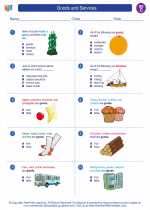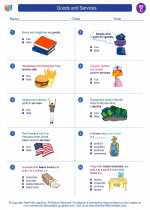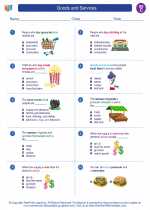Food
Food is any substance consumed to provide nutritional support for an organism. It is usually of plant or animal origin and contains essential nutrients, such as carbohydrates, fats, proteins, vitamins, or minerals. Food is necessary for growth, energy, and overall health.
Types of Food
- Fruits and Vegetables: These are natural sources of vitamins, minerals, and fiber.
- Grains: Foods like rice, wheat, oats, and barley provide carbohydrates, which are an essential source of energy.
- Proteins: Foods like meat, fish, eggs, and beans are rich in protein, which is necessary for growth and repair of the body.
- Dairy: Milk, cheese, and yogurt are important sources of calcium and other nutrients essential for bone health.
- Fats and Oils: These provide essential fatty acids and are a concentrated source of energy.
- Sweets and Snacks: While these should be consumed in moderation, they can provide enjoyment and quick energy.
Food Groups
The USDA (United States Department of Agriculture) has categorized food into five main groups:
- Grains
- Vegetables
- Fruits
- Dairy
- Proteins
Healthy Eating
It is important to have a balanced diet that includes a variety of foods from each of the food groups. This helps ensure that the body gets all the necessary nutrients for good health. It is also important to limit the intake of processed foods, sugary drinks, and high-fat, high-sugar snacks.
Study Guide
- What are the main types of food?
- Why is it important to have a balanced diet?
- List the five main food groups according to the USDA.
- What are some examples of healthy snacks?
- Why is it important to limit the intake of processed foods?
[Food] Related Worksheets and Study Guides:
.◂Social Studies Worksheets and Study Guides Third Grade. Goods and Services
Study Guide Goods and Services
Goods and Services  Worksheet/Answer key
Worksheet/Answer key Goods and Services
Goods and Services  Worksheet/Answer key
Worksheet/Answer key Goods and Services
Goods and Services  Worksheet/Answer key
Worksheet/Answer key Goods and Services
Goods and Services 

 Worksheet/Answer key
Worksheet/Answer key
 Worksheet/Answer key
Worksheet/Answer key
 Worksheet/Answer key
Worksheet/Answer key

The resources above cover the following skills:
National Curriculum Standards for Social Studies (NCSS)
PRODUCTION, DISTRIBUTION, AND CONSUMPTION
SOCIAL STUDIES PROGRAMS SHOULD INCLUDE EXPERIENCES THAT PROVIDE FOR THE STUDY OF HOW PEOPLE ORGANIZE FOR THE PRODUCTION, DISTRIBUTION, AND CONSUMPTION OF GOODS AND SERVICES.
KNOWLEDGE - Learners will understand:
The difference between needs and wants.
The goods and services produced in the market and those produced by the government.
PROCESSES - Learners will be able to:
Analyze the differences between wants and needs.
GLOBAL CONNECTIONS
SOCIAL STUDIES PROGRAMS SHOULD INCLUDE EXPERIENCES THAT PROVIDE FOR THE STUDY OF GLOBAL CONNECTIONS AND INTERDEPENDENCE.
KNOWLEDGE - Learners will understand:
All cultures have similar needs, but meet those needs in different ways that may influence or be influenced by global connections.
PROCESSES - Learners will be able to:
Identify and examine how wants and needs of people in one part of the world may conflict with the wants and needs of people in other parts of the world.
National Content Standards in Economics (NCSE)
Scarcity
Students will understand that productive resources are limited. Therefore, people cannot have all the goods and services they want; as a result, they must choose some things and give up others. Students will be able to use this knowledge to identify what they gain and what they give up when they make choices.
At the completion of Grade 4, students will know that:
People make choices because they can’t have everything they want.
Economic wants are desires that can be satisfied by consuming a good (an object), a service (an action), or a leisure activity.
Most people produce and consume. As producers they help make goods and services; as consumers they use goods and services to satisfy their wants.
At the completion of Grade 4, students will use this knowledge to:
Match a list of wants with the correct example of a good, service or leisure activity that satisfies each want.
Identify people who are consumers and provide examples in which students were consumers of goods and services. Identify people who are producers and provide examples of situations in which students helped produce goods and services.
Allocation
Students will understand that different methods can be used to allocate goods and services. People acting individually or collectively must choose which methods to use to allocate different kinds of goods and services. Students will be able to use this knowledge to evaluate different methods of allocating goods and services, by comparing the benefits to the costs of each method.
At the completion of Grade 4, students will know that:
No method of distributing goods and services can satisfy all wants.
Students will understand that different methods can be used to allocate goods and services. People acting individually or collectively must choose which methods to use to allocate different kinds of goods and services. Students will be able to use this knowledge to evaluate different methods of allocating goods and services, by comparing the benefits to the costs of each method
At the completion of Grade 4, students will know that:
There are different ways to distribute goods and services (by prices, command, majority rule, contests, force, first-come/first-served, sharing equally, lottery, personal characteristics, and others), and there are advantages and disadvantages to each.
Money and Inflation
Students will understand that money makes it easier to trade, borrow, save, invest, and compare the value of goods and services. The amount of money in the economy affects the overall price level. Inflation is an increase in the overall price level that reduces the value of money. Students will be able to use this knowledge to explain how their lives would be more difficult in a world with no money, or in a world where money sharply lost its value.
At the completion of Grade 4, students will know that:
People consume goods and services, not money; money is useful primarily because it can be used to buy goods and services.
Producers use natural resources, human resources, and capital goods (not money) to make goods and services.